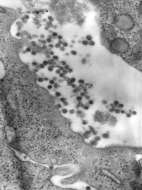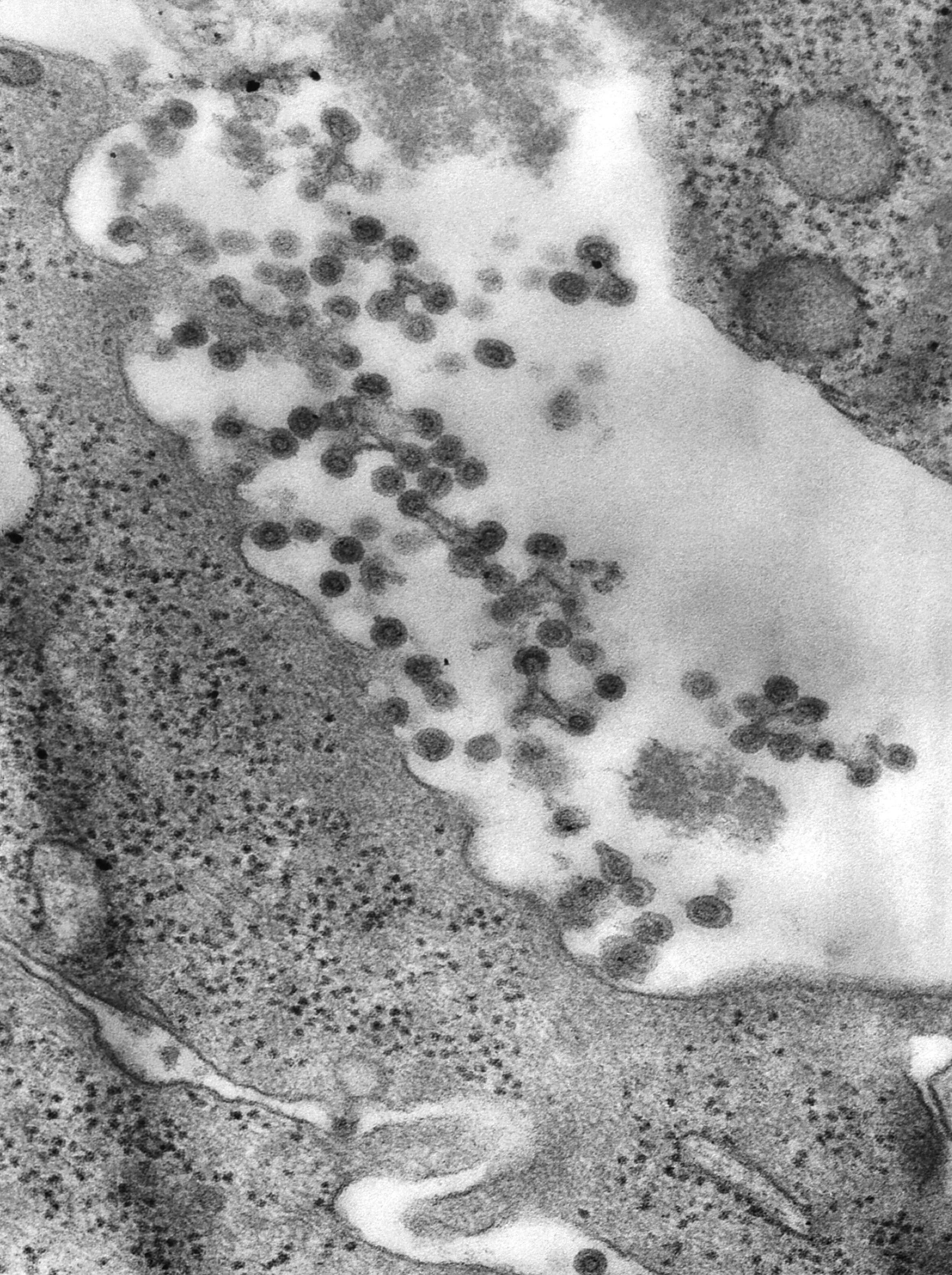Description: English: This negatively-stained transmission electron micrograph (TEM) revealed the presence of Rubella virus virions, as they were in the process of budding from the host cell surface to be freed into the host’s system, thereby, producing an enveloped virus particle, which means that after budding, the spherical virions' icosahedral capsid is enclosed in the host cell membrane. Inside the capsid lies the Rubella virus’ positive-sense single-stranded RNA ((+)ssRNA) genome. The Rubella virus is known to be the cause of rubella, otherwise known as German measles. Deutsch: Transmissions-Elektronenmikroskopische (TEM) Aufnahme von Rubella-Viren, die gerade von der Zelloberfläche ausknospen und in den Wirtsorgan freigesetzt werden. Dabei entsteht ein behüllter Virus-Partikel, bei dem das ikosaedrische Kapsid von der Zellmembran der Wirtszelle umhüllt ist. Im Inneren des Kapsids liegt die Einzelstrang-RNA des Virus. Rubella-Virus ist der Erreger der Röteln. Date: 1975. Source:
http://phil.cdc.gov/phil/home.asp ID# 10221 US Department of Health and Human Services. Author: CDC/ Dr. Fred Murphy; Sylvia Whitfield. Permission(
Reusing this file): Public domainPublic domainfalsefalse. : This image is a work of the
Centers for Disease Control and Prevention, part of the
United States Department of Health and Human Services, taken or made as part of an employee's official duties. As a work of the
U.S. federal government, the image is in the
public domain.
eesti ∙
Deutsch ∙
čeština ∙
español ∙
português ∙
English ∙
français ∙
Nederlands ∙
polski ∙
slovenščina ∙
suomi ∙
македонски ∙
українська ∙
日本語 ∙
中文 ∙
中文(台灣) ∙
中文(简体) ∙
中文(繁體) ∙
العربية ∙
+/− :.



